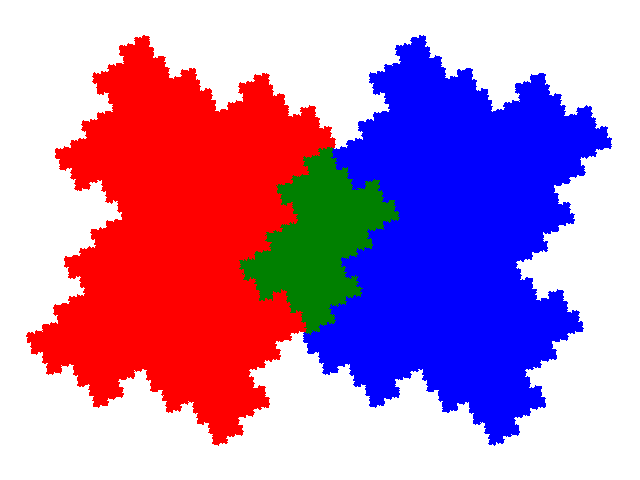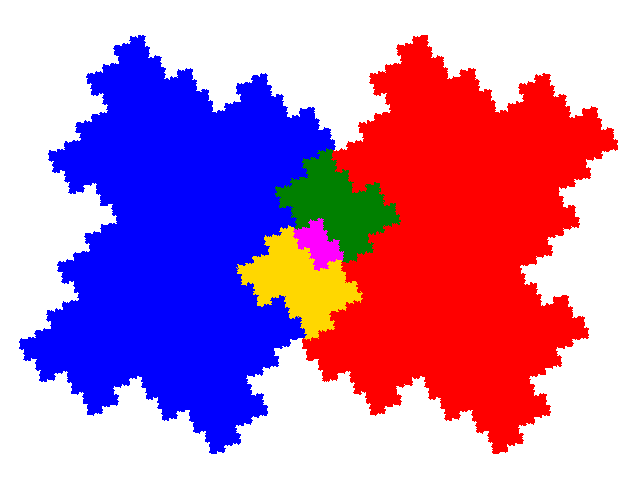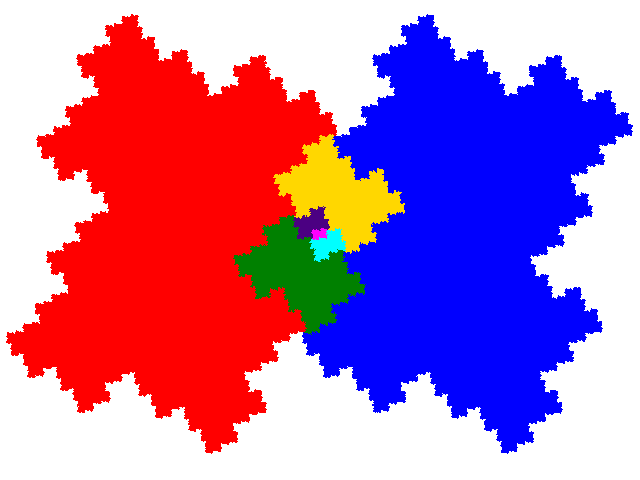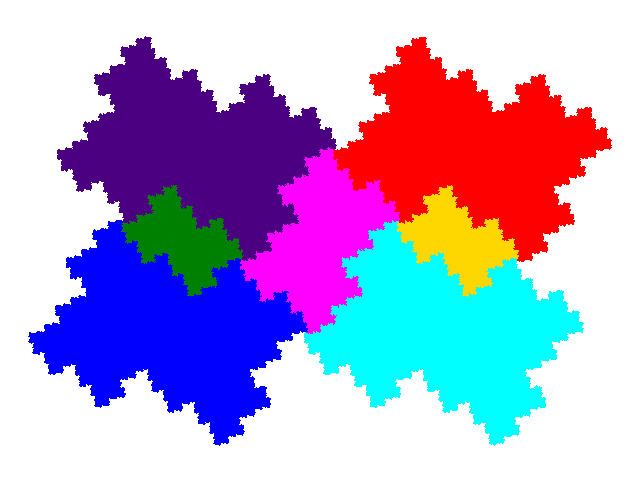


- all 3 pairs of elements merged (including implementations of 2 order 3 demisymmetric tiles, and 2 order 5 demisymmetric tiles)
- c1 elements merged
- c1 and c4 elements merged
- c1 and c7 elements merged
- c4 and c7 elements merged
- c4 elements merged
- c7 elements merged
Thus there are are a total of 52 2c+2c4+2c7+c9 demisymmetric tiles.

- all three pairs of elements merged (including implementations of 2 order 3 demisymmetric tiles, and 1 disconnected figure)
- all c2 elements merged (including 3 disconnected figures)
- long diagonal c2 and c4 elements merged
- short diagonal c2 and c4 elements merged
- long diagonal c2 elements merged (including 1 disconnected figure)
- short diagonal c2 elements merged (including 1 disconnected figure)
- c4 elements merged
Thus there are a total of 48 4c2+c3+2c4 demisymmetric tiles.